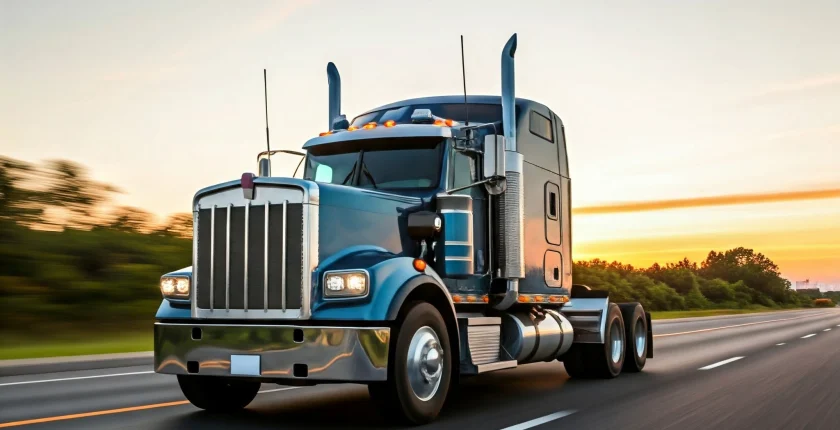The US Trucking Industry in 2025
2024 proved to be a challenging year for the US trucking industry. Overcapacity, coupled with fluctuating fuel prices, persistent inflation, and softening freight demand, created a difficult environment for many stakeholders. As we look towards 2025, the question on everyone’s mind is: will the industry rebound? This article aims to provide a realistic outlook for the year ahead, offering actionable insights for drivers, brokers, owner-operators, trucking companies, and logistics providers.
The Rebound: A Gradual Recovery
The factors that contributed to the 2024 downturn are expected to persist, albeit with varying degrees of influence. While inflation is projected to moderate, it’s unlikely to disappear entirely. Fuel prices will remain volatile, influenced by global events and production decisions. Freight demand, while expected to see some growth, is unlikely to return to the highs of 2022 immediately. Therefore, a sharp, V-shaped recovery is improbable. Instead, a more gradual, U-shaped recovery is anticipated, with growth picking up momentum in the second half of 2025.
Freight Volume and Rates: A Sector-Specific Outlook
Freight volume is expected to see modest growth overall, with some sectors performing better than others.
- Dry Van: Demand for dry van freight, closely tied to consumer spending, is expected to see moderate growth as consumer confidence gradually improves.
- Refrigerated: Demand for refrigerated transport, driven by food consumption, is generally more stable. A slight uptick is expected, aligning with population growth.
- Flatbed: Demand for flatbed freight, tied to construction and manufacturing, is anticipated to remain relatively flat, with potential for slight growth contingent on infrastructure spending.
Spot rates are expected to remain under pressure in the first half of 2025 due to continued overcapacity. However, as demand gradually increases and capacity adjusts, spot rates are projected to stabilize and potentially see modest increases in the latter half of the year. Contract rates, typically negotiated over longer terms, are expected to remain relatively stable, reflecting the current market conditions.
Driver Shortage and Recruitment: An Ongoing Challenge
The driver shortage remains a significant challenge. To attract and retain qualified drivers, trucking companies need to focus on:
- Competitive Compensation: Offering competitive pay, benefits, and bonuses is crucial.
- Improved Work-Life Balance: Implementing strategies to reduce driver downtime and increase home time is essential.
- Investing in Technology: Providing drivers with modern, well-maintained equipment and user-friendly technology can enhance job satisfaction.
- Targeted Recruitment: Utilizing online platforms, social media, and driver referral programs can improve recruitment effectiveness. This is the best way to find truck drivers.
For those looking for trucking jobs, now is a good time to research trucking companies that prioritize driver wellbeing and offer competitive packages.
| Freight Type | Avg. Spot Rate 2024 (Estimated) | Projected Spot Rate 2025 |
|---|---|---|
| Dry Van | $1.80/mile | $1.85 - $1.95/mile |
| Refrigerated | $2.20/mile | $2.25 - $2.35/mile |
| Flatbed | $2.50/mile | $2.50 - $2.60/mile |
Technology and Innovation: Shaping the Future
Technology continues to revolutionize the trucking industry.
- Autonomous Vehicles: While full autonomy is still some years away, advancements in driver-assist technologies are improving safety and efficiency.
- AI-Powered Logistics: AI is being used to optimize routes, predict demand, and improve overall logistics efficiency.
- Telematics: Telematics systems provide valuable data on vehicle performance, driver behavior, and fuel efficiency, enabling data-driven decision-making.
These technologies are transforming trucking companies and creating new opportunities for tech-savvy drivers.
Regulatory Landscape: Staying Ahead of the Curve
Potential regulatory changes related to emissions standards and hours of service could impact the industry. Staying informed about these changes and adapting proactively is crucial for all stakeholders.
Impact on Different Stakeholders:
- Truck Drivers: Focus on finding reputable trucking companies offering competitive pay and benefits. Upskilling through training programs can enhance employability.
- Brokers: Leverage technology to optimize operations and build strong relationships with both shippers and carriers.
- Owner-Operators: Carefully manage expenses, explore niche markets, and invest in fuel-efficient equipment.
- Trucking Companies: Prioritize driver recruitment and retention, invest in technology, and adapt to evolving regulations. Finding the best way to find truck drivers is critical.
2025 is expected to be a year of gradual recovery for the US trucking industry. While challenges remain, opportunities exist for those who are adaptable, innovative, and proactive. By staying informed, embracing technology, and prioritizing strong relationships, stakeholders can navigate the road ahead successfully. The demand for trucking jobs will continue, but the landscape of trucking companies will evolve.
